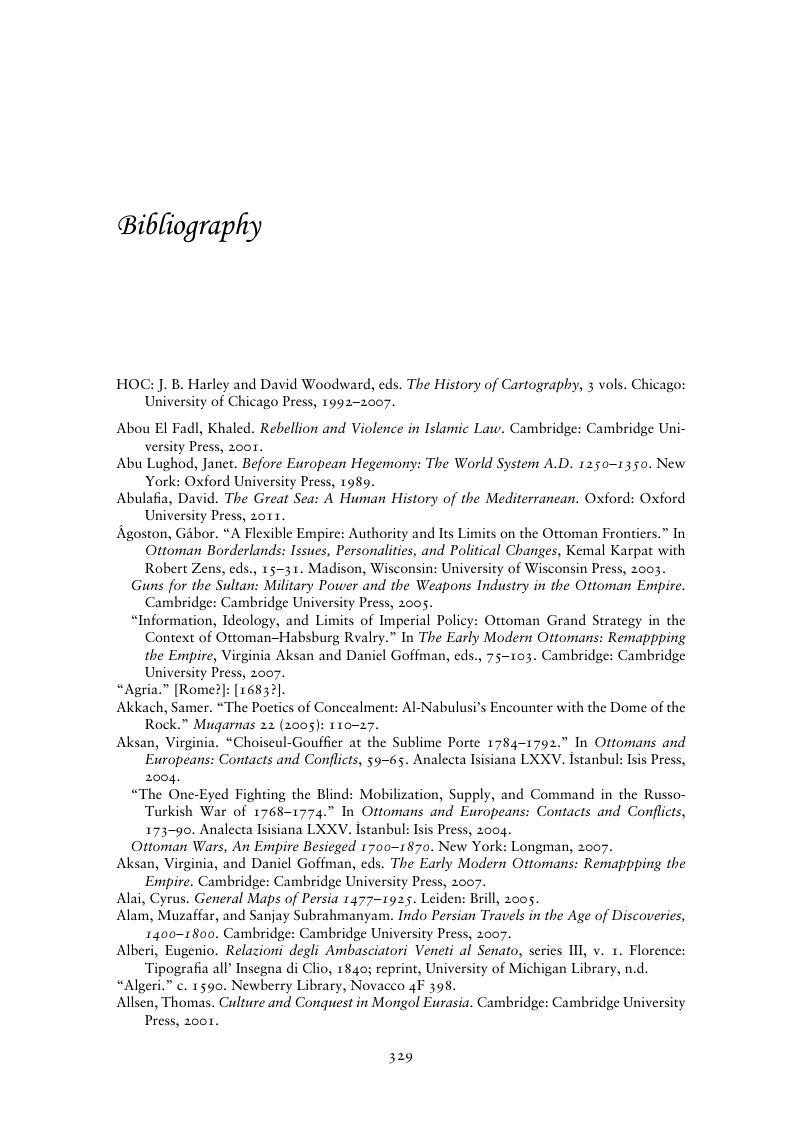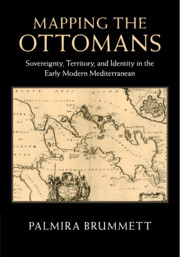Book contents
- Mapping the OttomansSovereignty, Territory, and Identity in the Early Modern Mediterranean
- Reviews
- Dedication
- Mapping the Ottomans
- Copyright page
- Contents
- List of Images
- Book part
- Note on Transliteration and Translation
- Frontispiece
- 1 Introduction
- 2 Reading and Placing the “Turk”
- 3 Borders
- 4 Sovereign Space
- 5 Heads and Skins
- 6 From Venice and Vienna to Istanbul
- 7 Authority, Travel, and the Map
- 8 Afterword
- Bibliography
- Index
- References
Bibliography
Published online by Cambridge University Press: 05 May 2015
- Mapping the OttomansSovereignty, Territory, and Identity in the Early Modern Mediterranean
- Reviews
- Dedication
- Mapping the Ottomans
- Copyright page
- Contents
- List of Images
- Book part
- Note on Transliteration and Translation
- Frontispiece
- 1 Introduction
- 2 Reading and Placing the “Turk”
- 3 Borders
- 4 Sovereign Space
- 5 Heads and Skins
- 6 From Venice and Vienna to Istanbul
- 7 Authority, Travel, and the Map
- 8 Afterword
- Bibliography
- Index
- References
Summary

- Type
- Chapter
- Information
- Mapping the OttomansSovereignty, Territory, and Identity in the Early Modern Mediterranean, pp. 329 - 358Publisher: Cambridge University PressPrint publication year: 2015

